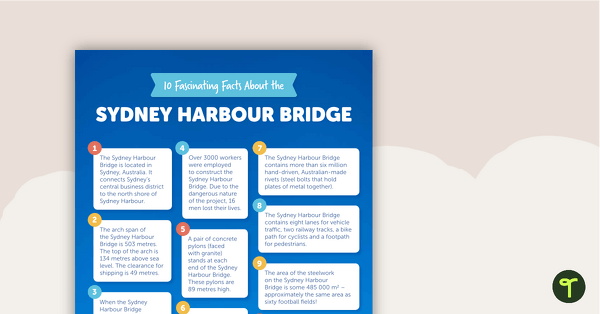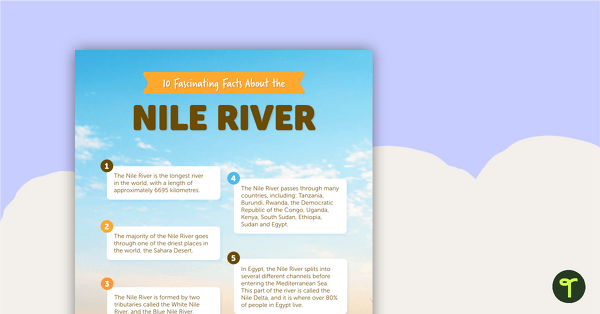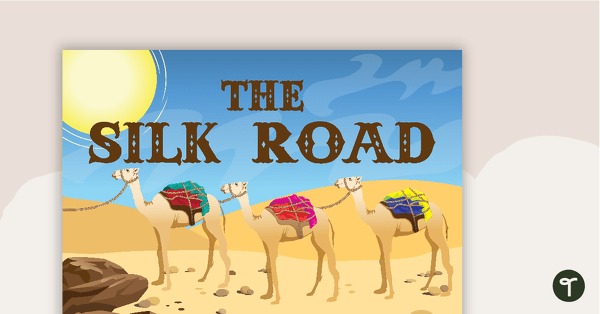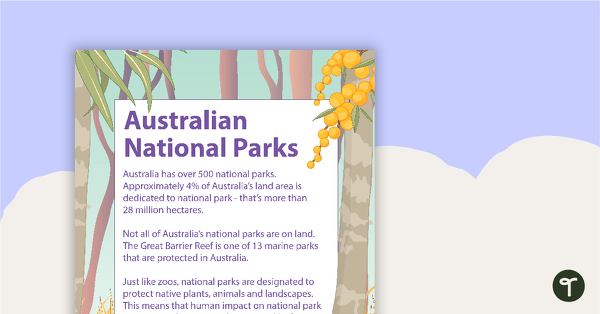Landmarks Teaching Resources
Teaching about Australian landmarks in your primary classroom? Explore printable worksheets, digital activities and more HASS resources created by teachers for teachers like you!
This Australian curriculum-aligned collection is stocked with teaching resources that have been carefully reviewed and selected by experts on our teaching team to ensure every single one is ready for your lesson plans, your classroom and your students!
Looking for more ideas to teach this section of the curriculum? Read on for a primer from our teacher team, including kid-friendly definitions of landmark to share with your class, plus examples of famous Austrailan landmarks that can help you build your lesson plans.
What Is a Landmark? A Kid-Friendly Definition
Before you head off on your landmark lessons, we thought a kid-friendly definition from our teacher team might just come in handy to introduce the lesson.
A landmark is an important and recognisable feature or structure with historical, cultural or geographical importance. A landmark serves as a point of reference or a symbol representing a particular place or event.
5 Famous Australian Landmarks for Kids
Of course, there are thousands of important and famous Australian landmarks you could cover to help students better understand the country's heritage.
Need help to whittle it down? Here are a few landmarks and monuments that offer a host of options for lesson planning!
- The Sydney Opera House — Located right in Sydney, the iconic opera house is a landmark that's known all around the world for its unique architecture.
- Uluru — An example of an Australian landmark that is natural, rather than being created by humans, Uluru holds deep spiritual significance for many First Nations people. It is not only a natural wonder but also a symbol of Aboriginal heritage and connection to the land.
- The Great Barrier Reef — Another natural landmark, the reef located off the coast of Queensland is the world's largest coral reef system and a UNESCO World Heritage Site.
- The Twelve Apostles — One of Victoria's most famous landmarks, these limestone stacks along the Great Ocean Road showcase the erosive power of the ocean, which makes a good discussion in your science classes.
- The Royal Exhibition Building — This Melbourne landmark was the very first site in Australia to be named a UNESCO World Heritage Site.

One of the world's most famous landmarks is the Sydney Opera House, located right here in Australia.
5 Famous World Landmarks for Kids
Of course, Australia isn't the only home of landmarks in the world. These instantly recognisable places can be found on various continents around the world.
- The Eiffel Tower — One of the most famous — and most visited — landmarks in the world can be found in Paris, where this towering feat of engineering has stood since the late 19th century.
- The Statue of Liberty — Explore the history of the French and American relationship and the history of American immigration through this lady in New York's Harbour. This historic statue isn't just a landmark and monument; it's also a symbol of America.
- The Pyramids at Giza — Standing since the early 26th century BC, the three Pyramids at Giza in Egypt were built as tombs for pharaohs.
- The Acropolis — Located in Athens, Greece, this historic complex of buildings and temples includes the famous Parthenon. A world famous landmark, it is also a symbol of ancient Greek civilization and democracy.
- The Grand Canyon — While many landmarks were built by humans, others are natural like the Grand Canyon in the United States. This vast canyon in the American southwest is full of natural beauty and ample science lessons.
Fun Landmark Activities for the Classroom
Looking for fun ways to incorporate landmarks activities into your lesson plans? Give these ideas from our teacher team a try!
- Take a Virtual 'Walk' — Head to Google Maps to take a virtual walk around one of the world's most notable landmarks. Some buildings — like the Empire State Building — even have virtual tours that will allow your students to get a look inside.
- Play Name the Landmark — Need a simple but fun warm-up activity? Post a photo of a famous Australian landmark on your digital whiteboard, and have students name it. This can also be used with pictures of states and territories, geographic features and more!
- Free Plan

Great Barrier Reef Comprehension and Note Taking Worksheet
Learn about The Great Barrier Reef with a reading comprehension and note-taking activity.
- Plus Plan

Natural Landmarks of Australia - Poster Pack
10 beautifully designed posters about some of Australia's most famous natural landscapes.
- Plus Plan

What Makes Australia Unique Posters
A set of 6 educational posters highlighting some of the things that make Australia unique
- Plus Plan

Famous Landmarks - STEM Challenge Cards
A set of 8 famous landmarks STEM challenge cards encouraging students to build famous structures.
- Plus Plan

Comprehension - The Great Wall of China
A comprehension activity about The Great Wall of China.
- Plus Plan

10 Fascinating Facts About the Sydney Harbour Bridge – Comprehension Worksheet
A comprehension worksheet for an article including ten facts about the Sydney Harbour Bridge in Australia.
- Plus Plan

Human Features of Australia PowerPoint
A 22 slide editable PowerPoint template to use when studying the human features of Australia.
- Plus Plan

Seven US Landmarks Posters
A set of 7 posters highlighting some of the United States most famous Landmarks.
- Plus Plan

The New Seven Wonders of the World — Mini-Book
Teach about the new Seven Wonders of the World with this informative mini-book for year 5 and year 6 students.
- Plus Plan

10 Fascinating Facts About Burano – Worksheet
A comprehension worksheet for an article from the Year 3 magazine (Issue 3).
- Plus Plan

10 Fascinating Facts About Mount Fuji – Worksheet
A comprehension worksheet for an article from the Year 6 magazine (Issue 3).
- Plus Plan

10 Fascinating Facts About the Nile River – Worksheet
A comprehension worksheet for an article from the Year 5 magazine (Issue 3).
- Plus Plan

10 Fascinating Facts About the Golden Gate Bridge – Worksheet
A comprehension worksheet for an article from the Year 4 magazine (Issue 3).
- Plus Plan

10 Fascinating Facts About Mauna Kea – Comprehension Worksheet
A comprehension worksheet for an article about ten facts about Mauna Kea in Hawaii.
- Plus Plan

Silk Road Word Wall
A set of vocabulary cards for a silk road word wall.
- Plus Plan

Five UK Landmarks Posters
A set of 5 posters highlighting some of the UK's most famous Landmarks.
- Plus Plan

Uluru Size Comparison Poster
A poster showing the size of Uluru.
- Plus Plan

Five Australian Landmarks Posters
A set of 5 posters highlighting some of Australia's most famous Landmarks.
- Plus Plan

6 Australian National Parks Posters
A set of six posters with information about Australian National Parks, including how to care for them.
- Plus Plan

Our Place - Australia Inquiry Task
An inquiry-based assessment task in which students will demonstrate an understanding of the natural and human features of Australia.
- Plus Plan

Human Features of Australia
A 60 minute lesson in which students will identify the human features of Australia and explore some Australian landmarks.
- Plus Plan

A Natural Wonder - Our Great Barrier Reef
A 60 minute lesson in which students will explore the unique natural environment of the Great Barrier Reef.
- Plus Plan

India
A 60-minute lesson in which students learn how people lived in and adapted to the environment in India.
- Plus Plan

The Andes Mountains
A 60-minute lesson in which students learn how people lived in and adapted to the alpine environment in the Andes Mountains.
- Plus Plan

Egypt
A 60-minute lesson in which students learn how people lived in and adapted to the desert environment in Egypt.
- Plus Plan

Greece
A 60-minute lesson in which students learn how people lived in and adapted to the Mediterranean environment in Greece.